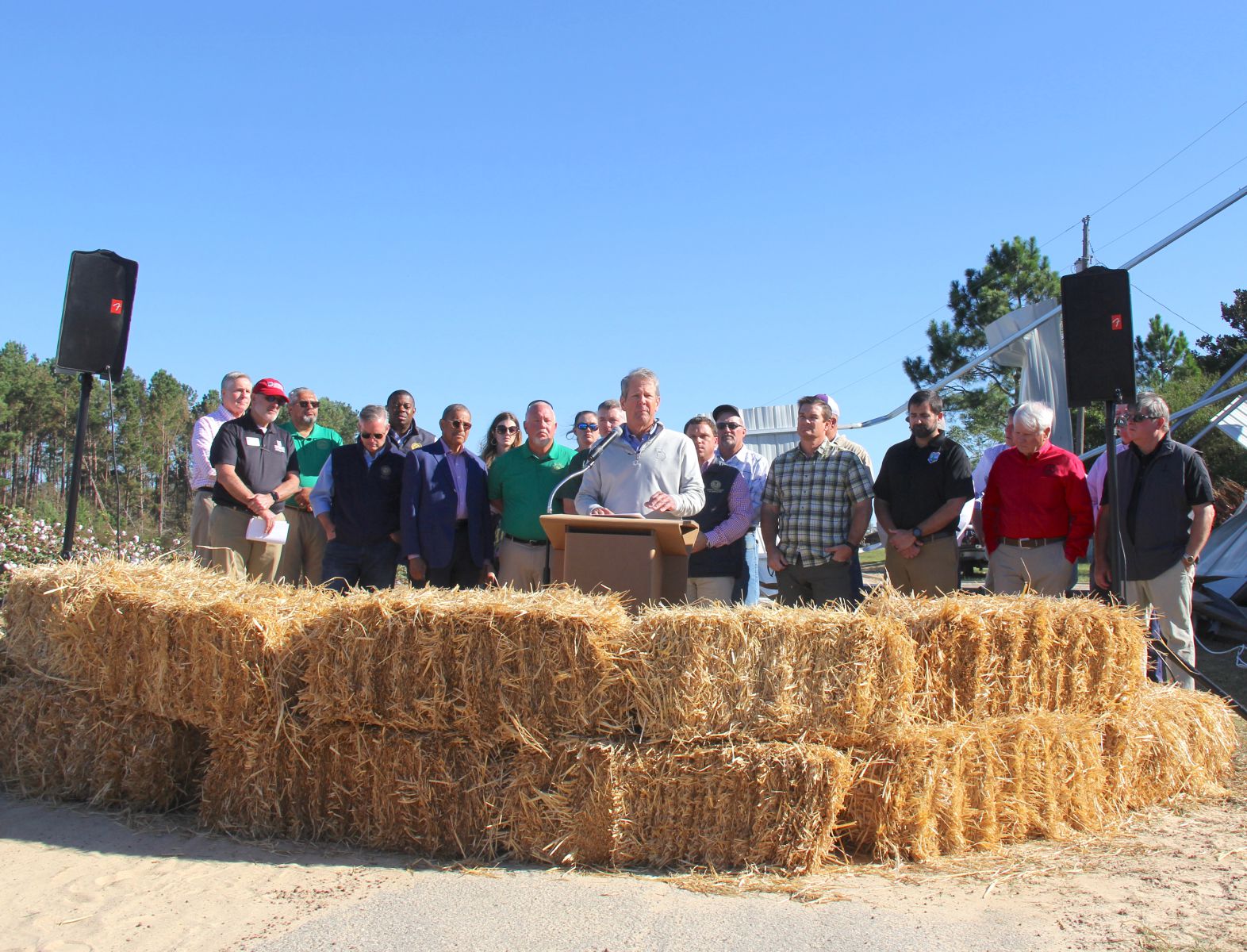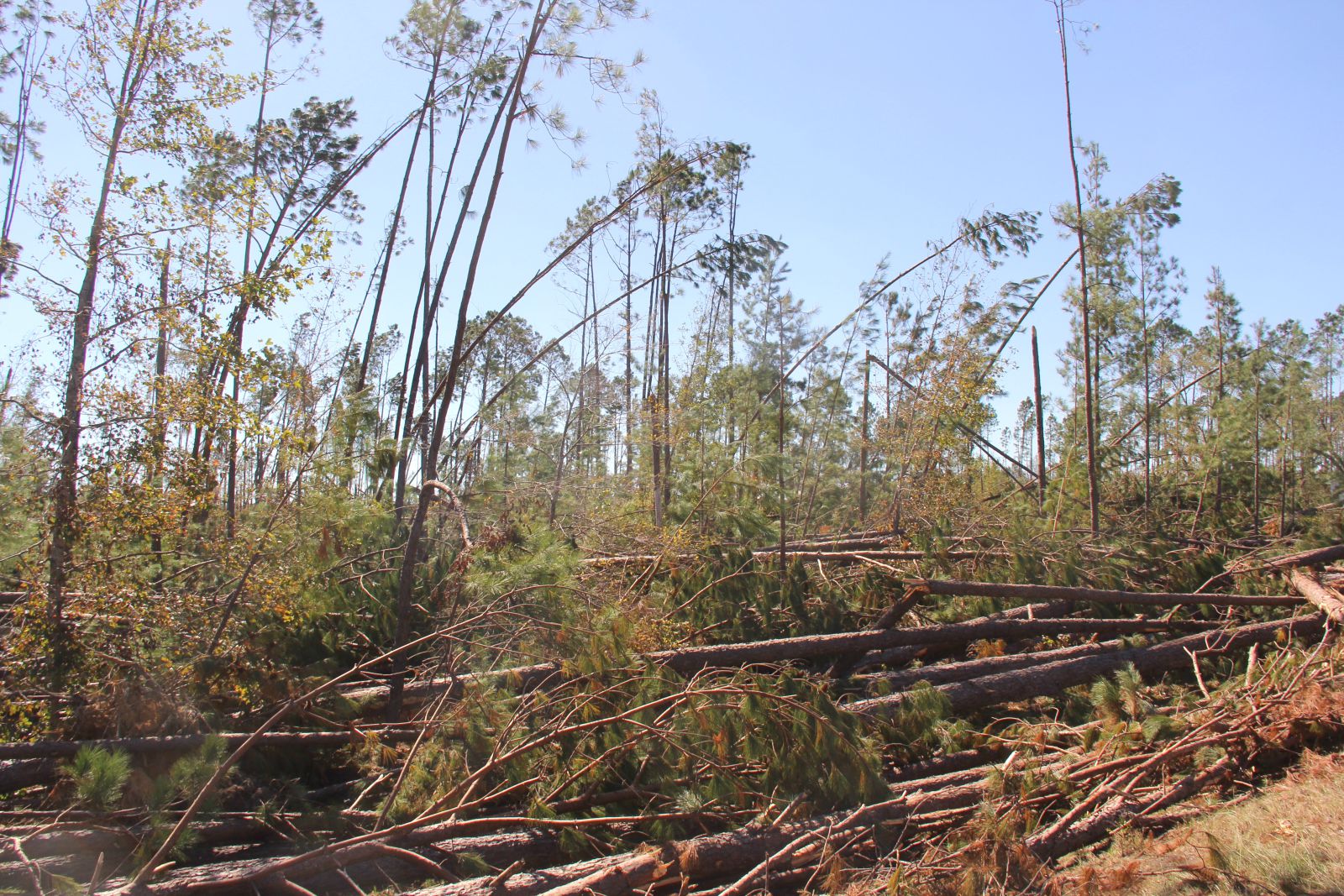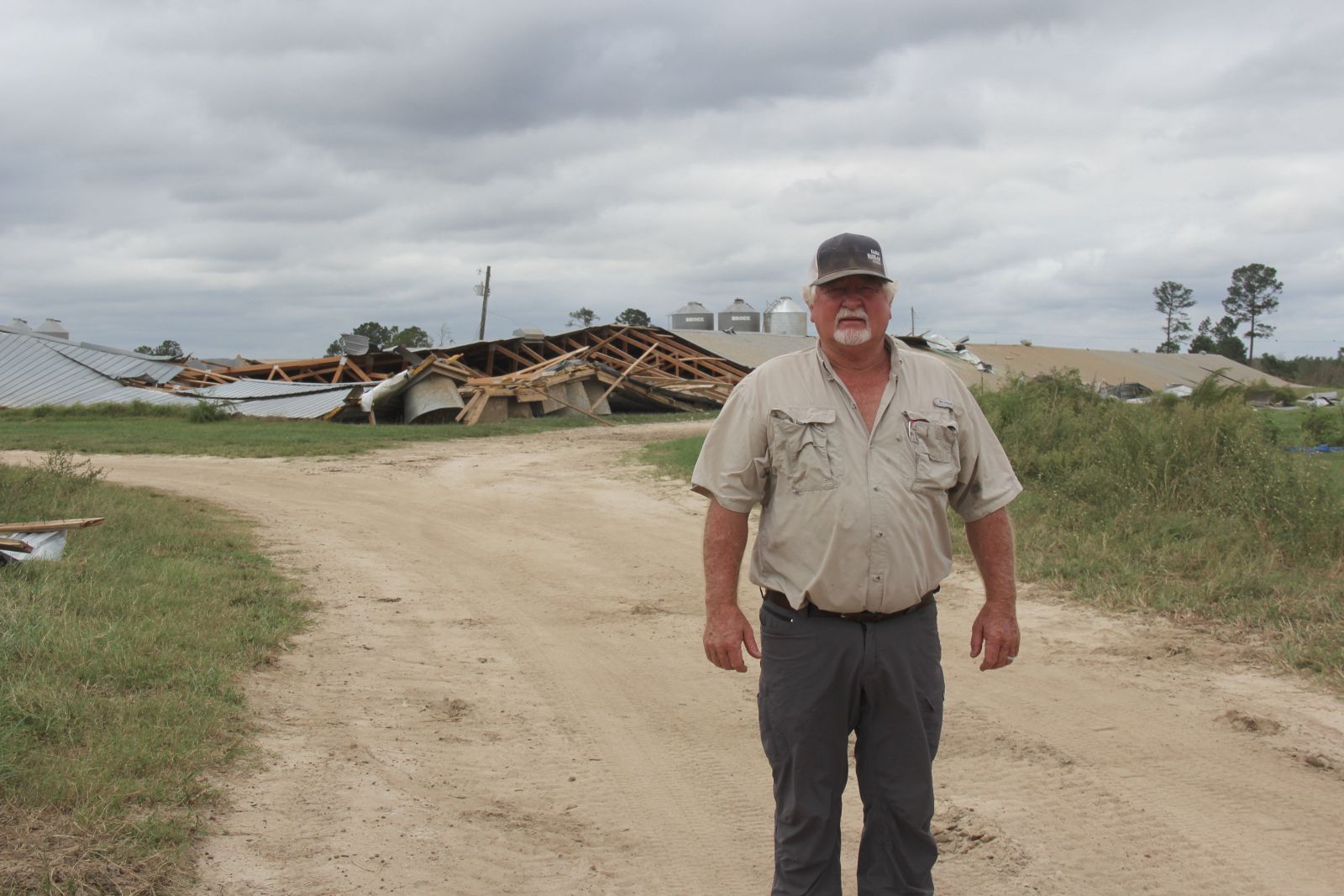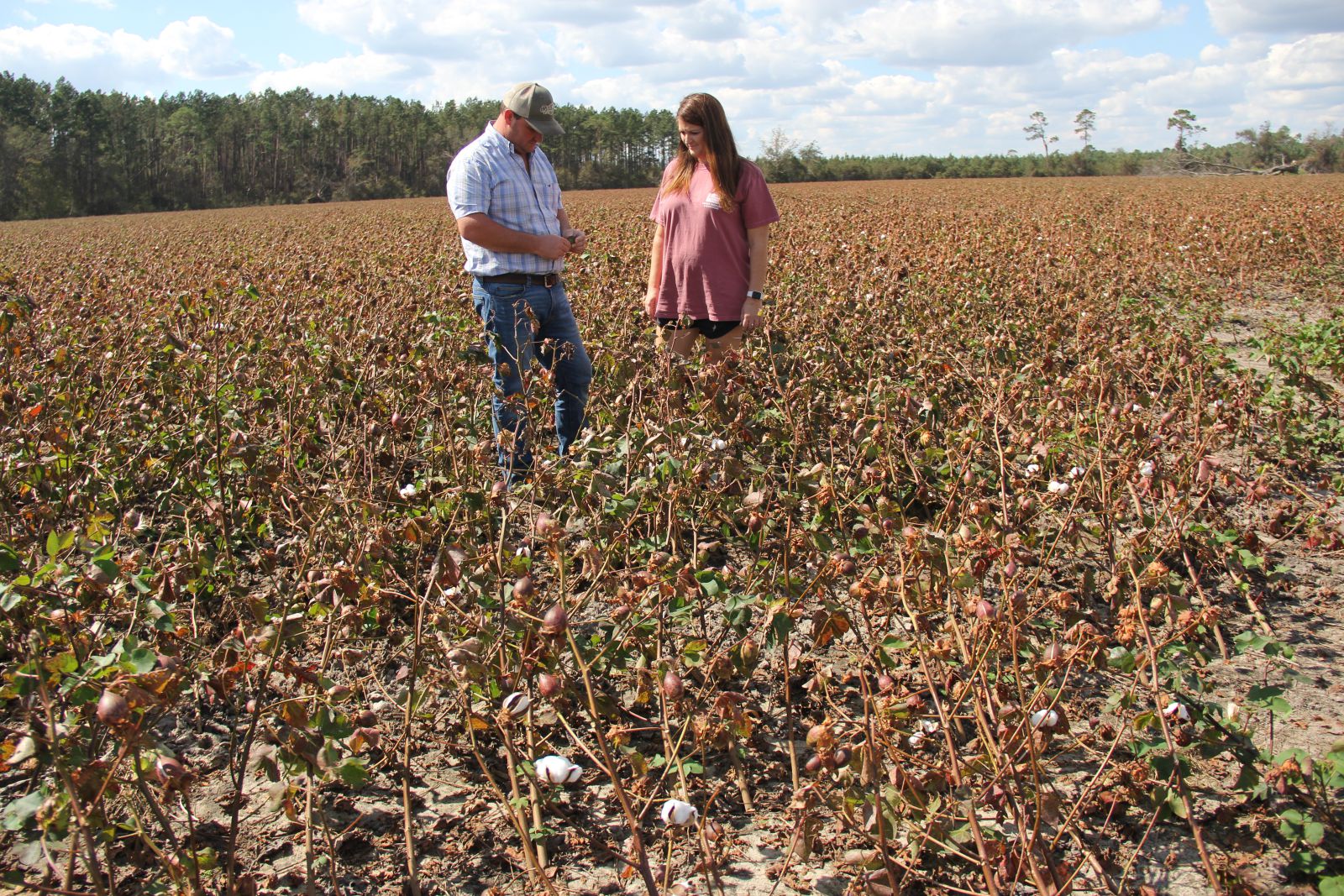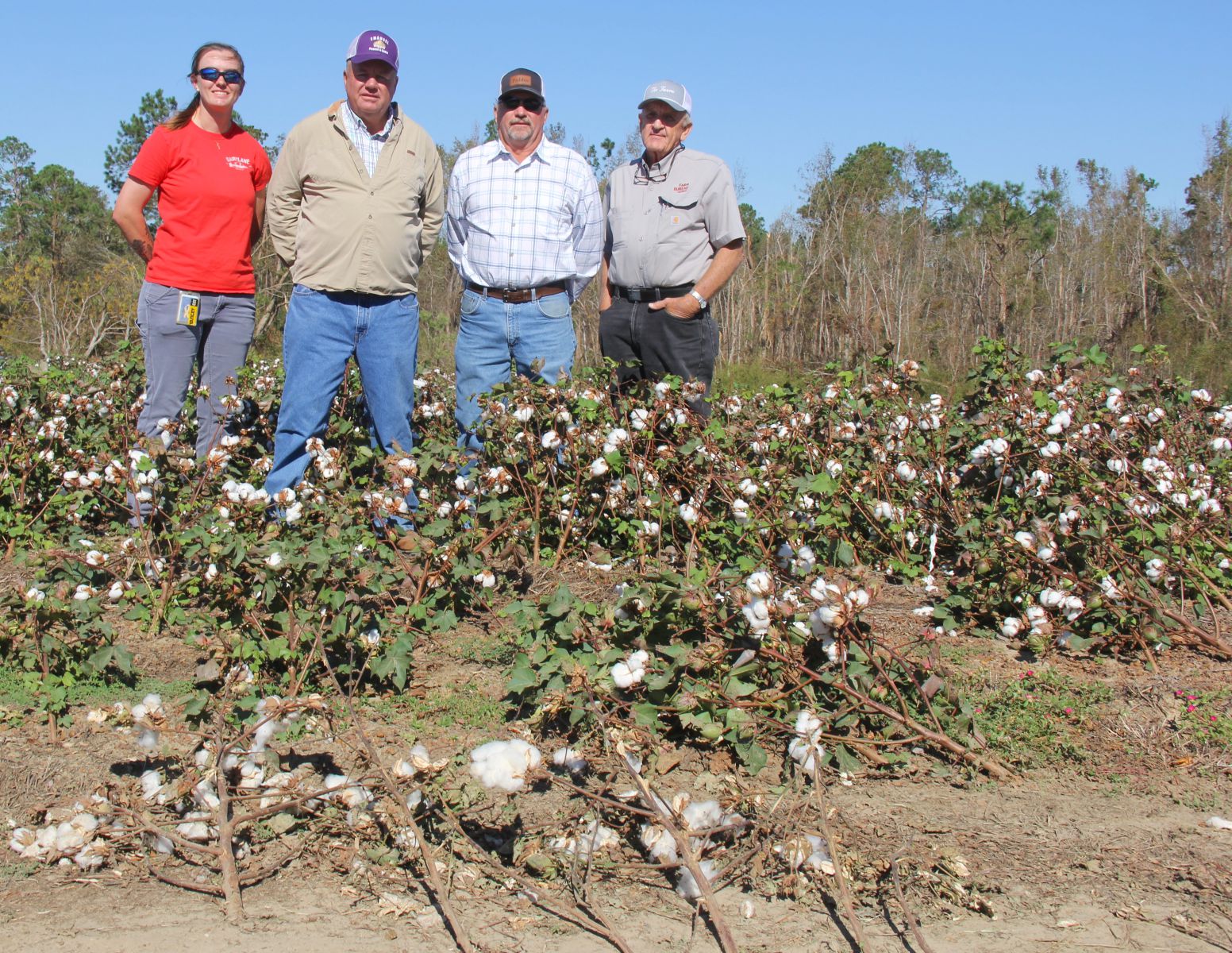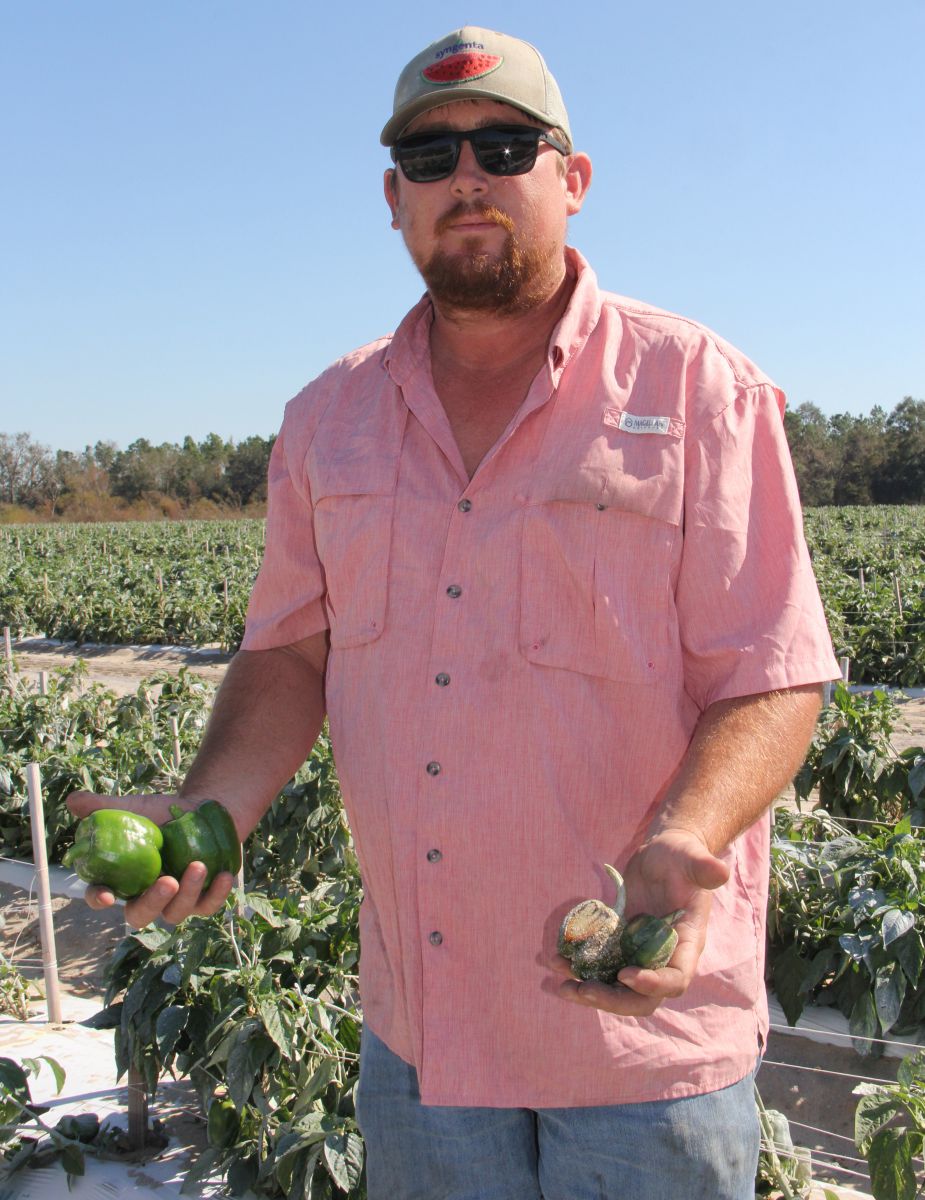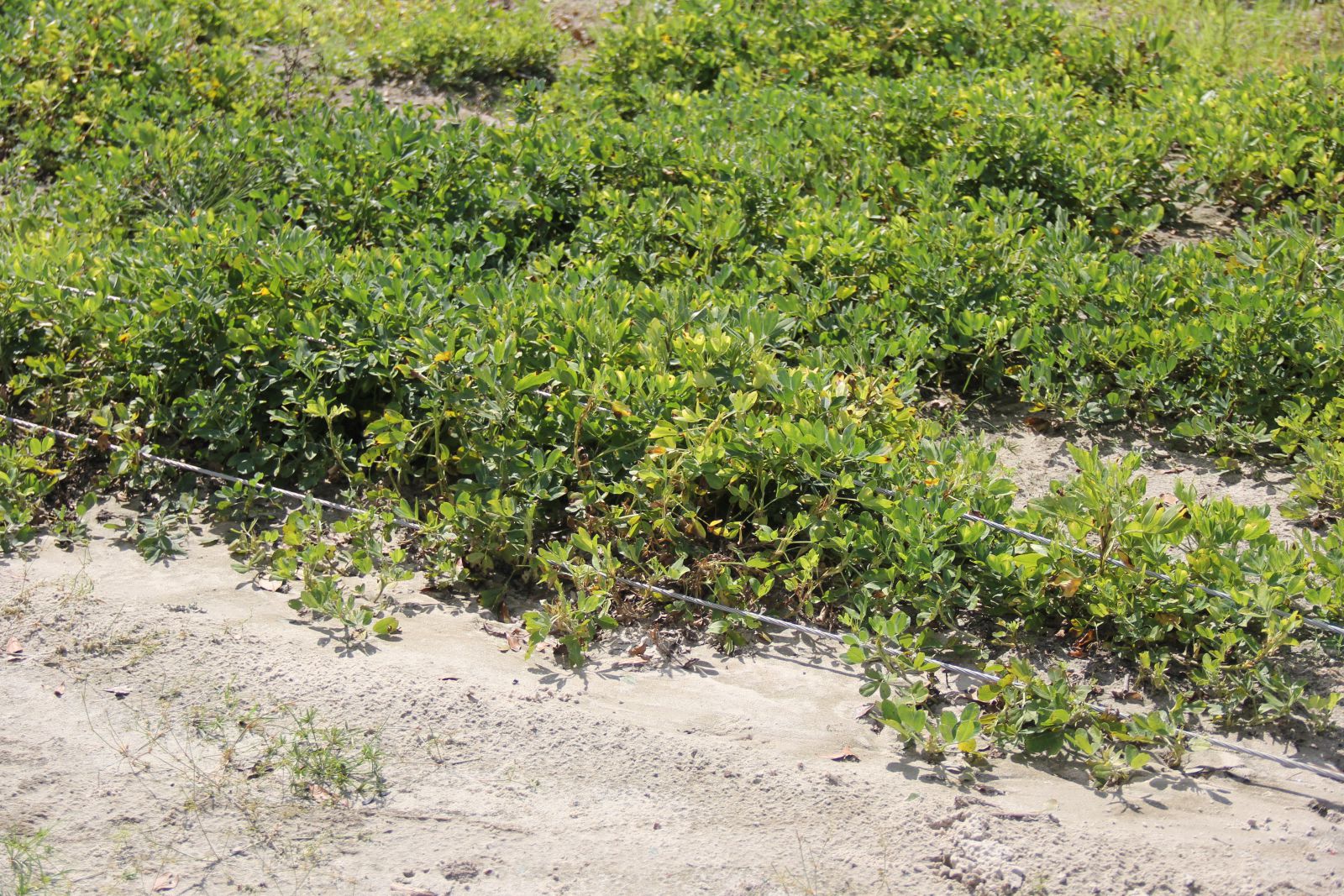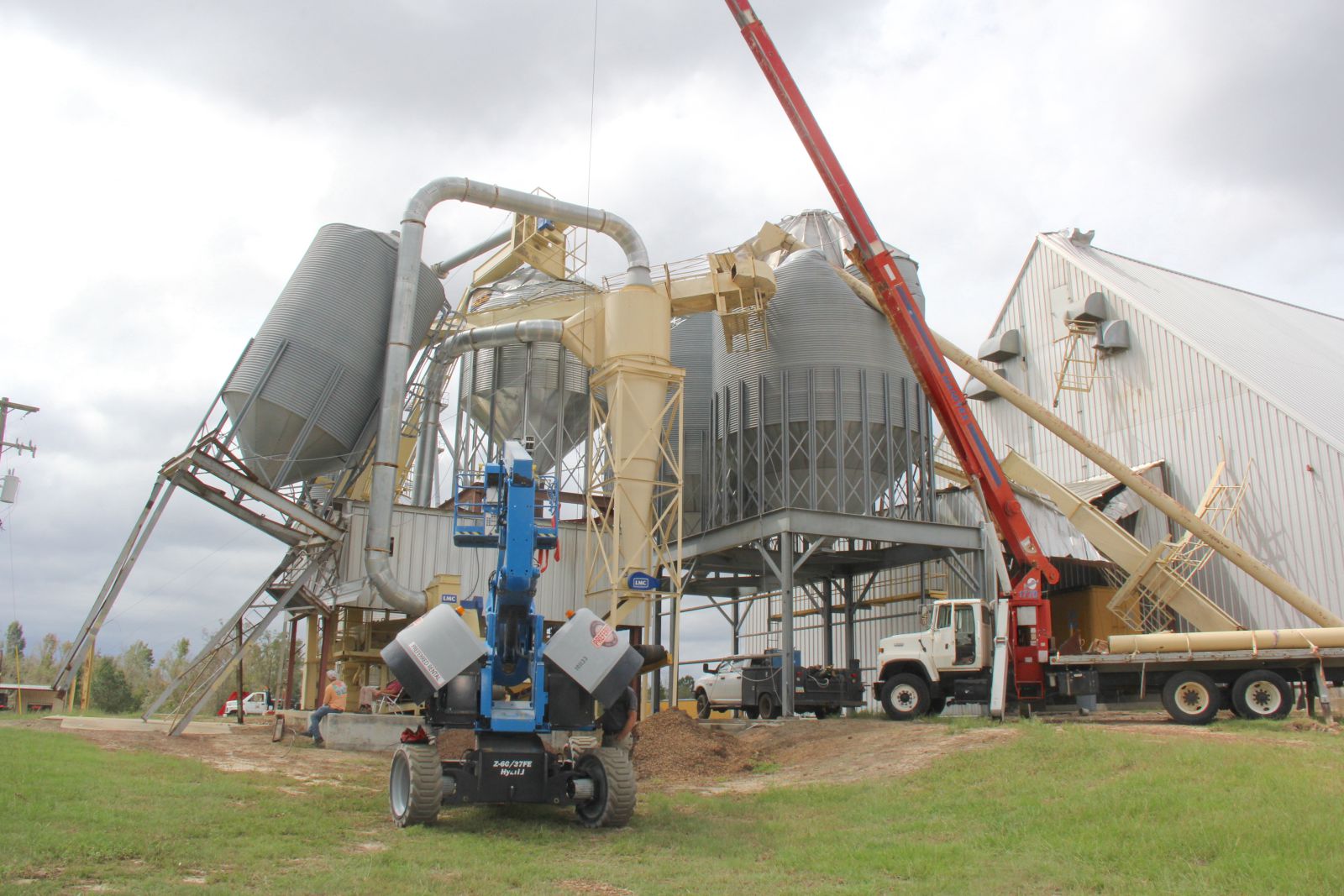test-blog
Hurricane Helene wreaks havoc on Georgia crops & timber
by Jennifer Whittaker and Jay Stone
Posted on November 25, 2024 7:00 PM
On Oct. 10, during a press conference in Treutlen County, Georgia Gov. Brian Kemp and other state officials discussed agriculture and timber damage caused by Hurricane Helene. / Photo by Jennifer Whittaker
By Jay Stone & Jennifer Whittaker
Hurricane Helene, which pummeled Georgia from late Sept. 26 into the morning of Sept. 27 from Valdosta to Augusta, will cost Georgia’s economy an estimated $6.46 billion in direct and indirect agricultural and timber losses, according to a preliminary study the University of Georgia released Oct. 10. State officials say this is more than double the losses and impact Hurricane Michael caused in 2018, which was the most devastating storm in recent history at that time.
State agencies compiling storm losses say it will take months to tally the full scope of damages. Numbers reported here are based on Nov. 8 updates.
Helene followed Tropical Storm Debby, which hit many of the same farmers on Aug. 5. Both storms could not have come at a worse time for Georgia farmers, who were already facing economic hardship caused by inflation, high input costs and depressed commodity prices. Prior to the storms, U.S. Net Farm Income was projected to drop by $6.5 billion in 2024, following a decline of $35.6 billion in 2023.
On Oct. 10, Gov. Brian Kemp and Georgia Agriculture Commissioner Tyler Harper were joined by members of Georgia’s Congressional delegation and state legislators at a press conference at the farm of brothers Terry and Ronnie Phillips in Treutlen County to discuss the damage Georgia’s agriculture and forestry sectors sustained.
Agriculture and forestry are estimated to have $3.2 billion in direct losses according to preliminary estimates.
"We depend on our farmers and timber growers to provide the food and fiber we use every day and that drives our economy as part of Georgia's No. 1 industry," said Kemp. "I'm urging all our local, state, and federal partners to join efforts in bringing them relief. That's why we're calling on the federal government and Congress to act quickly in appropriating relief funds and helping them rebuild their livelihoods."
Agriculture and timber contributed more than $83 billion to Georgia’s economy in 2022 and employed more than 320,000 Georgians according to the 2024 UGA Ag Snapshots report.
"About a third of our ag and forestry sectors have been affected. Whether you live in Atlanta, Augusta or Soperton, this hurricane is going to affect you. Our farmers need help right now to make it to the next growing season," Harper said. "We hope the federal government will implement a block grant program soon to allow each state affected by Helene to help their farmers. We can't wait six months or a year."
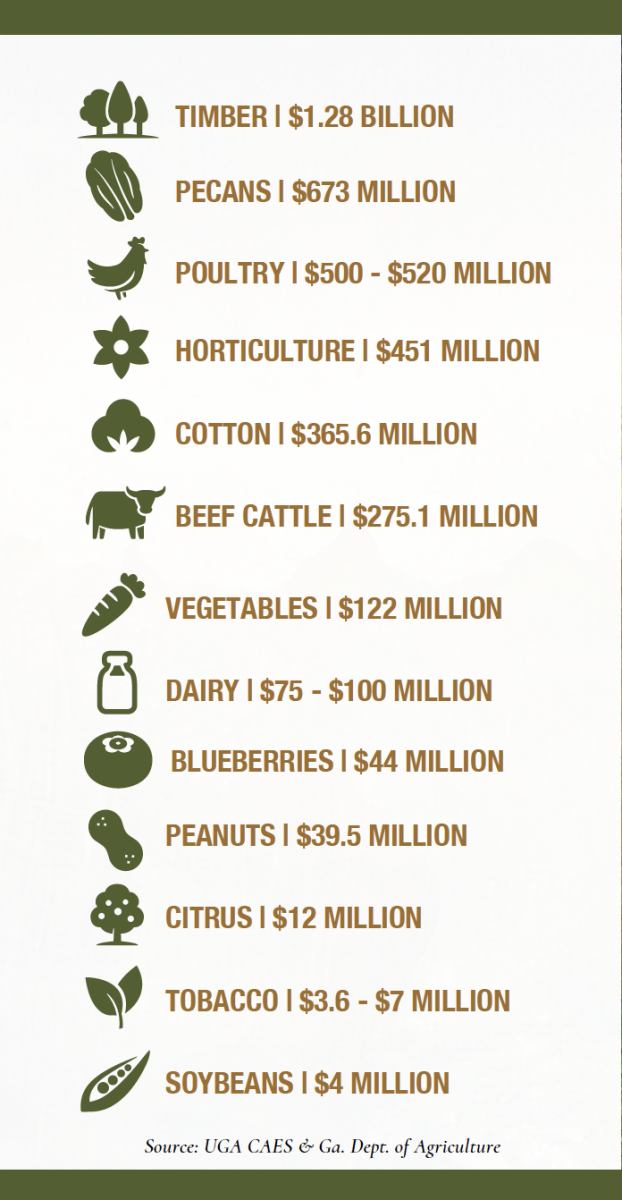
On Nov. 1, Gov. Kemp announced the Georgia State Financing and Investment Commission (GSFIC) redirected $100 million to the Georgia Development Authority (GDA) to provide disaster relief financial support for farmers and debris cleanup for timber producers impacted by Hurricane Helene. $75 million will provide disaster relief loans to those in the ag industry and $25 million will provide disaster relief to those in the timber industry to support cleanup efforts, debris removal on timberland and fire control measures.
Farmers who suffered losses from Hurricane Helene and reside in a FEMA designated disaster area or adjacent county are eligible to apply for up to $500,000 at a 2% fixed interest rate through the Safety 24 Loan Program. Loans will be administered on a first come, first serve basis. Eligible loan uses include income replacement, operating capital, repairing/replacing damaged farm structures, repairing/replacing damaged equipment, and buying machinery necessary to recover from hurricane damage. Visit www.gdaonline.com/hurricane-helene-loan-program/ for the list of eligible counties, all program details and to apply for a loan.
The Georgia Forestry Commission announced the Hurricane Helene Fuels Mitigation and Hurricane Helene Firebreaks Cleanout programs on Nov. 18. Visit www.gfb.ag/gfchelenerecoveryresources.
The Weathered But Strong: Georgia Hurricane Relief Fund is accepting applications from farmers affected by Hurricane Helene at https://www.supportgeorgiafarmers.org/application until midnight Dec. 31. This fund aims to provide critical financial assistance to those in need. Farmers across the affected areas who suffered losses are encouraged to apply. Farmers must hold a current, valid GATE card number issued through the Georgia Department of Agriculture (GDA).
This relief fund was established by the GDA in partnership with the Georgia Foundation for Agriculture with support from more than 40 agricultural partners. For more information or to donate to the Weathered But Strong fund, visit www.supportgeorgiafarmers.org .
Visit https://www.supportgeorgiafarmers.org/resources-for-farmers for an extensive list of recovery resources available through USDA Farm Service Agency disaster assistance programs, FEMA and other agencies.
TIMBER
Damaged timber in Treutlen County. / photo by Jennifer Whittaker
Hurricane Helene traversed 8.8 million acres of timber and had a total impact of $1.28 billion on Georgia’s timber sector, Georgia Forestry Commission Director Johnny Sabo said.
“Forestry changed overnight in this state,” Sabo said. “The detriment Hurricane Helene caused to our private landowners will take years to clean up. This area [Soperton] where we are today is considered the wood basket of the state. On top of the financial impact there’s also an impact to landowners’ mental well-being.”
According to a report compiled by the Georgia Forestry Commission and peer reviewed by the UGA Warnell School of Forestry, private forested land accounted for 88% of the impacted land owned in the hurricane’s path. Wind graphics from Peachtree City National Weather Service indicated wind speeds from 60-100 miles per hour from Valdosta to Augusta.
Visit https://gatrees.org/forest-management-conservation/natural-disaster-recovery/hurricane-helene-recovery-assistance/ to access resources provided by the Georgia Forestry Commission that cover issues including: evaluating & managing storm-damaged timber, selling storm-damaged timber, how to claim timber losses and defer taxes on salvage timber sales & directories for registered foresters and services.
POULTRY
Helene destroyed more than 165 poultry houses and another 500 must be repaired or rebuilt, UGA reports. Georgia’s poultry sector is estimated to have suffered $500-$520 million in damage, UGA reports, which includes loss of income until houses are rebuilt.
Jeff Davis County Farm Bureau Director Vann Wooten, who grows broilers (chickens for meat) for Pilgrim’s Pride was hit hard. He’s raised broilers for 41 years. / Photo by Jennifer Whittaker
“I’ve never seen anything like this in my life. I’ve got one [chicken] house left standing, and it has some damage, but I’m trying to get it fixed so we can get birds back in it,” Jeff Davis County broiler producer Vann Wooten said. “I just lost my source of income and my retirement fund to this storm. We [farmers] don’t need a disaster loan. We [farmers] need a grant so we can get back up and farming.”
A week after the storm, Wooten said he’d slept very little.
“I’ve worked my whole life for this farm. How am I going to stay here? How am I going to make a living?” Wooten asked. “I’m willing to build back with some help. All I know is farming cattle and chickens and row crops.”
Jeff Davis County poultry producer Jamie Tate with one of his damaged layer chicken houses. / photo by Jennifer Whittaker
Table egg producer Jamie Tate, also in Jeff Davis County, sustained damage to all four of his poultry houses, losing the birds housed in one that collapsed. The storm ripped 2/3 of the tin roof on the poultry stackhouse at Tate’s farm. This shed is used to store and dry out poultry litter before it’s applied to fields as fertilizer.
The morning of Oct. 11, the Tates were still without power and running their layer houses on generators.
“That’s another job for us just to keep the generators running. It takes an hour every morning to fill up all the gas containers for the day that we use to run the generators,” Jamie explained. He estimates he can run one of his four generators for nine hours on seven gallons of gas.
Tate wasted no time getting a contractor from Dothan, Ala., to begin repairing his houses. By Friday, Oct. 4, the crew had a few panels of new tin nailed over the easiest-to-fix holes Helene left on his chicken house roofs. The panels of shiny new tin offered hope of a new beginning amidst the chaos Helene left on the Tate farm.
In addition to damaging their chicken houses, the Tates lost about 15 old-growth pecan trees that made a small orchard at the farm's entrance. A mule barn, built in the 1940s, that was the farm's symbolic heart was heavily damaged.
"There's no telling how many family photos that have been made in front of this barn," Tate said.
Poultry farms throughout Helene’s path were damaged including Appling, Bacon, Coffee, Evans and Tattnall counties.
PECANS
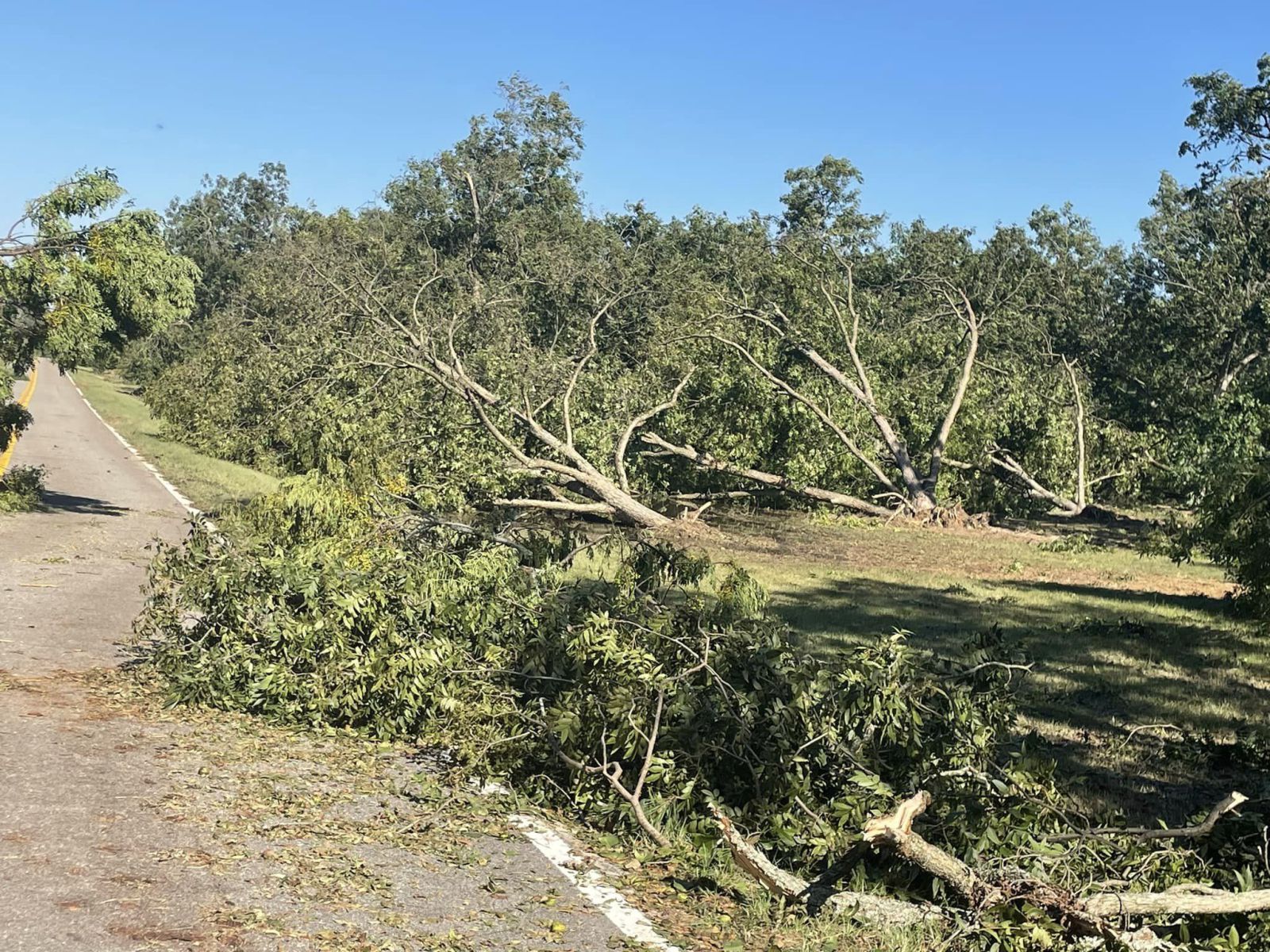
These uprooted pecan trees at the Jefferson County farm of Sam Pennington mirror damage throughout Southeast Georgia from Valdosta to Augusta./ Photo by Wesley Sparks.
Georgia pecan growers took a hit that is being described by industry leaders as a generational loss. Entire orchards were blown over, destroying not only this year’s crop but future ones, too.
In Washington County, Willis Hartley lost approximately 75% of the trees on his 180-acre orchard. It remains to be seen whether the ones left standing can be harvested.
“We were four weeks from harvest,” Hartley said. “Before we can get in there to harvest, we have to get all the downed trees cleaned up.”
Hartley, age 80, had a stroke in 2022 and has worked his way back to being able to work the farm he bought in 1968.
“It's heartbreaking,” Hartley said. “I just sat down and cried. I had to work this long to accumulate this orchard, make it look like it did, and then to lose it, it's terrible.”
UGA’s preliminary loss damage report estimates Georgia lost at least 420,000 pecan trees. The crop loss of pecans blown to the ground is estimated at $62 million while the cost to replant damaged trees and loss of future income is estimated to be $611 million.
“It’s a difficult thing to see in person and to put into words. We have not seen a storm with this level of destruction in the past,” UGA Extension Pecan Specialist Dr. Lenny Wells said. “The damage begins in Brooks and Lowndes counties and extends north, north-east about 260 miles.”
Wells said most remaining upright trees lost the largest percentage of their nuts when they were blown off the trees still in their green shuck.
Pecan damage is extremely heavy in Atkinson/Coffee/Bacon Counties then straight north to Soperton, Vidalia and Lyons, UGA Southeast Area Pecan Agent Andrew Sawyer wrote in his pecan blog. Sawyer says the eye wall looks to have traveled between/around GA Hwy 19 and U.S. 221 to Dublin until turning towards Augusta.
HORTICULTURE/PLANT NURSERIES

A common sight at McCorkle’s was torn plastic sheeting that covers greenhouses. Skeetter McCorkle said this structural design was chosen because of its ability to handle loads of snow. / Photo by Jay Stone
Georgia's horticulture sector is estimated to have sustained $451 million in damages to crops, future income, and infrastructure, per the UGA report.
At McCorkle Nurseries in McDuffie County, lost power meant lost irrigation. Winds damaged or destroyed numerous greenhouses on the farm. Skeetter McCorkle said nearly all the farm’s 6 million potted plants were turned over and had to be sat back up.
The McCorkles normally pump 4 million gallons of water per day for irrigation. A week after the storm, the farm was irrigating at half capacity thanks to loaned generators.
“That’s enough to keep the plants alive,” Skeetter said.
The McCorkles also lost some cedar trees the family planted in the 1960s next to the nursery’s main office. Within a few days, the nursery was back to shipping orders of plants.
COTTON
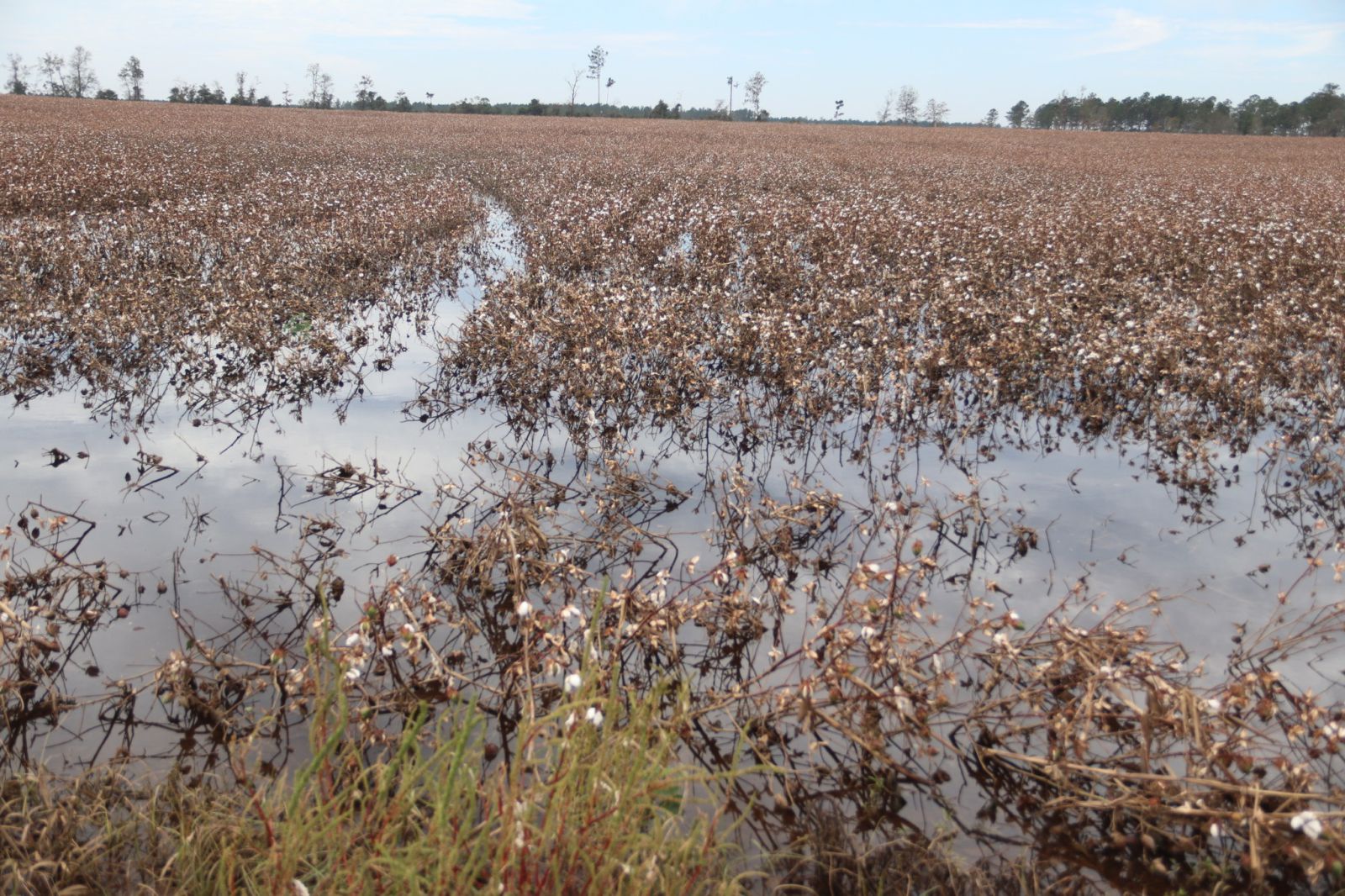
A Washington County cotton field still had standing water four days after Helene passed through. / photo by Jay Stone
Fields of cotton that would normally look like a fall snowstorm were left blown out with cotton stalks blown over or tangled together. The UGA report estimates 500,000 to 600,000 bales of cotton were lost resulting in a $236 million crop loss with an additional $129.6 million in other losses for a total of $365.6 million in estimated damages.
Johnson County’s Hugh Veal had cotton stalks blown over that then stood back up. The rest remained wet for days, resulting in the white fibers becoming stained and inundated with material from the rest of the plant. Whatever fiber can be harvested will be graded a lesser quality, making it less valuable. Plus, many of the bolls aren’t large enough to be caught by spindles in the combine at harvest.
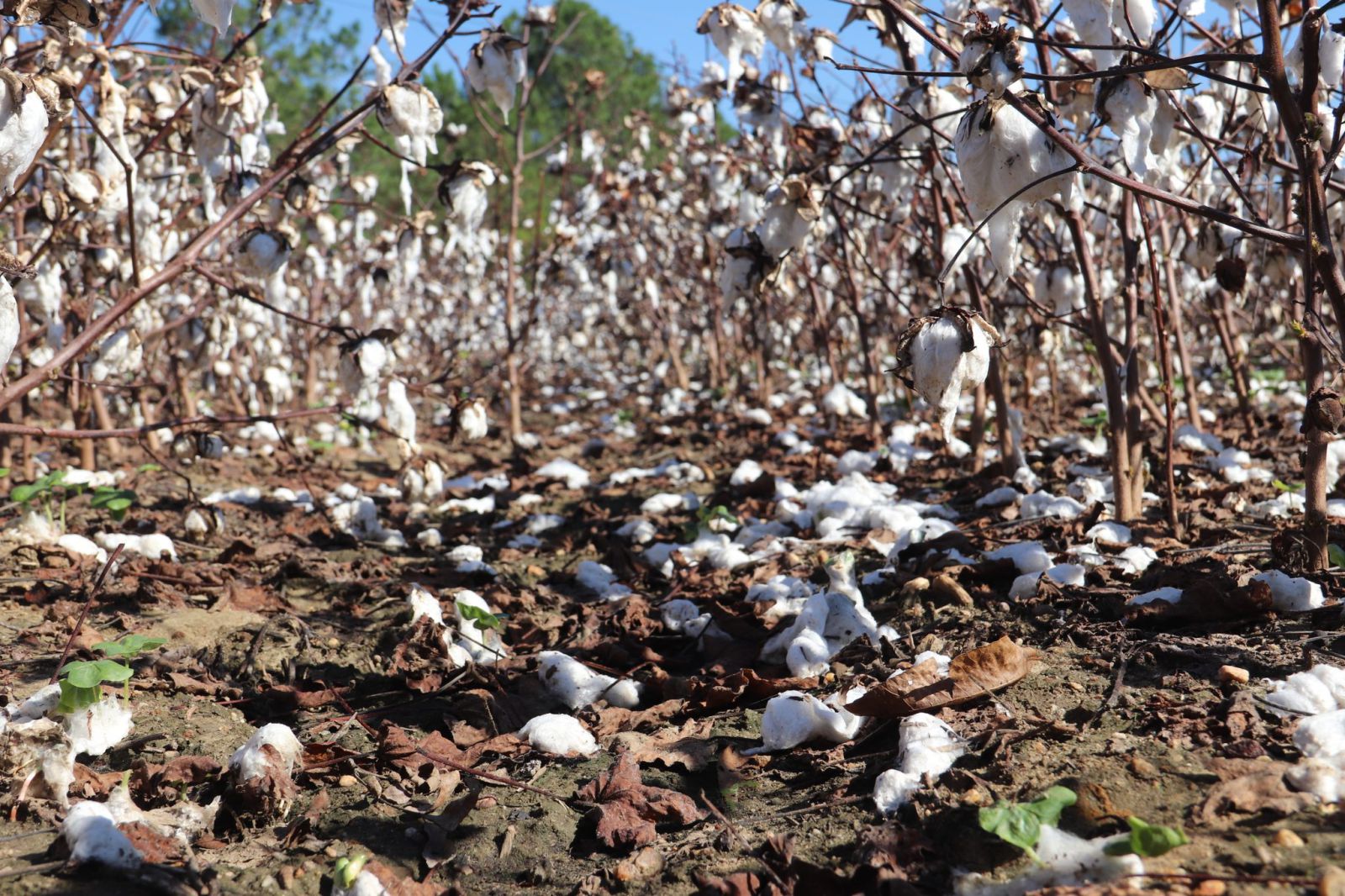
About 20% of Hugh Veal’s cotton fiber was blown off the plants onto the ground, rendering it unusable. / Photo by Jay Stone.
“It's a mess,” Veal said. “I don't think it's going to be worth picking. I mean, by the time you pay to pick the cotton, you don't have any money left, and it's not going to grade well because of the stains in the cotton. All we do is farm. It's just hard. You work and try to do things right. Then it goes haywire.”
At David and Lindsey Morgan’s Ware County farm, Hurricane Helene blew cotton stalks over in all their fields.
Helene left all the plants in one of the Morgans’ fields scorched and leaning. David said this field was a month away from being ready to be defoliated (sprayed to make the leaves fall off so the cotton picker equipment takes in less plant material as the crop is harvested). The cotton bolls had barely begun to open. /Photo by Jennifer Whittaker
Lindsey, who grew up on a row crop farm, said, “We’ve never had a storm like this. Normally, when a hurricane comes through it only means a free day from school. This time it’s serious.”
The Morgans had 3 weeks of rain during May, which delayed planting their cotton. Some fields had to be replanted.
“This year has been an issue from the beginning. We had the wet planting season that made getting the crop in the ground an issue, followed by a dry spell in July. 2024 has been a ‘gift’ that keeps on giving,” David said.
Another field of the Morgans’ cotton is about 5 miles away from the scorched field. David is hopeful the plants will remain green, but the storm blew stalks down.
“As blown over as the cotton is in this field, it makes me feel better because the plants are still green,” David said. “The plants may live long enough to let the bolls mature. “Picking blown over cotton like this will give you a heart attack because of how the stalks tangle in the picker.”
In Treutlen County, cotton grower Terry Phillips, said, “We spent five months growing this cotton crop and in three hours it’s gone.”
While some of the crop is salvageable, Phillips estimates they will have between $500,000 to $750,000 in losses.
Terry, along with his brother, Ronnie, hosted the Oct. 10 press conference where state officials announced preliminary ag and timber losses.
“This farm has been in our family since the Revolutionary War. We’re not going to let it stop on our watch,” Terry said. “We’re not going to give up nor quit.
After the Oct. 10 press conference at their farm, Georgia Farm Bureau President Tom McCall, far right, visits with the Phillips Family, from left, Breanna, her Dad, Terry, and his brother, Ronnie. /Photo by Jennifer Whittaker
BEEF CATTLE
Georgia’s beef cattle producers are estimated to have suffered $275.1 million in lost fencing, infrastructure and cattle. When they lost power, the electric pumps on their water troughs stopped working making it necessary for many cattle producers to haul fresh water from creeks or streams if they had them.
Cattle walk through tin blown into their pasture from destroyed chicken houses at Van Wooten's Jeff Davis County farm. / Photo by Jennifer Whittaker
The Georgia Cattlemen’s Association and Georgia Department of Agriculture coordinated an effort to turn livestock sale barns in the storm’s path into water distribution centers. Tanker trucks brought in water for cattle producers to fill up containers to take back to their farms.
Another pressing concern for cattle and dairy producers is replacing or repairing fences.
.jpg)
In Jefferson County, brothers Daniel and Robert Newberry had miles of fencing destroyed by fallen trees. / Photo by Jay Stone
“You’ve got to get the cows hemmed in, so you get them back on enough grass to where you don’t have to feed them. You’re going to shut them into the best area you can so you can fix that fence, so they’ll stay put,” said Daniel.
VEGETABLES

In Johnson County, massive rainfall washed soil and vegetable plants down terraces in Taylor Brett's fields, creating small canyons and sand bars. / Photo by Jay Stone.
UGA Extension agents and farmers estimate 30% of the fall crop was lost to Helene with estimated losses of $122 million.
In Johnson County, Taylor Brett’s broccoli and cabbage crops took hits from the massive rainfall, which washed soil and plants down terraced fields, leaving small ditches behind and creating sand bars at the bottom.
Brett double-crops his vegetables. He estimated a 10% loss from those he planted early, and the later crop might be down 50%.
At Corbett Brothers Produce in Echols County, Helene damaged numerous equipment sheds and did minor damage to the operation’s packing shed roof.
“We had damage from Hurricane Idalia last year, but this is 10 times worse than Idalia,” Justin said. “We’ve got a lot more structure damage from this storm. We’re going to have drastically reduced yields, but it’s too early to say.”
After Helene struck, Justin said that while he and his brother, Jared, did have crop losses, they still had viable bell peppers, eggplant and squash that they worked to harvest and to keep young plants alive.
“We’re running the office and packing shed on generators, but most of these generators are being used to run the well pumps in the fields to keep the crops watered so the plants can recover from the storm & keep producing vegetables,” Justin explained on Oct. 2.
The Corbett Brothers turned off the last generator running irrigation on the last field the morning of Oct. 9.
Echols County produce grower Justin Corbett & his brother, Jared, not pictured, lost some of their green peppers, pictured at right, to blistering after the sun came out. Treating the crop with an anti-blistering spray protected others like the ones on the left. / Photo by Jennifer Whittaker
DAIRY
Georgia’s dairy producers are estimated to have lost $75-$100 million in infrastructure damage, milk production and herd health issues.
Hillcrest Dairy in McDuffie County has pastures Mark Rodgers couldn’t use for grazing because of downed fences.
“It may be months, a lot of months before we actually have livestock in there, because you have fences down, and we're going to have to hire somebody to come in and do that fence,” Rodgers said.
The storm blew the roof off Hillcrest’s commodity shelter that houses the farm’s cattle feed ingredients. Hillcrest Dairy Operations Manager Caitlyn Rodgers said the feed components were OK to use, but they were saturated from rainwater. The resulting extra water intake resulted in a loss of milk production of about 5,000 pounds per day.
Hillcrest continued operations through the storm, though three of its five robotic milking stations went down.
The Rodgers counted themselves fortunate that they did not lose any cows and all their family and staff are safe.
On Sept. 30, at least $10,500 worth of milk had to be dumped statewide as a result of power outages, according to the Georgia Department of Agriculture. Right after Helene came through, there were 19 dairies statewide left without power operating on generators.
PEANUTS
UGA’s preliminary damage report estimates Georgia initially lost 5-7% of its peanut crop at an estimated cost of $39.5 million. Many growers ran peanut pickers late into the night on the days before Helene struck to pick as much of their crop as they could. However, much of the crop was still in the ground when Helene blew in, so, it’s likely peanut losses will increase by the end of harvest season.
The Veals in Johnson County were nearing time to harvest, but many a sampling of plants showed nuts that did not fill their hulls. The hulls stayed wet for an extended period and mold developed inside.
.jpg)
Hugh Veal checks his peanuts a few days after Hurricane Helene hit his Johnson County farm./ Photo by Jay Stone.
In Ware County, David Morgan still had a power line across the entrance to one of his fields on Oct. 4, preventing him from harvesting it. / Photo by Jennifer Whittaker
Morgan, like farmers across Helene’s path of destruction, also had to clear dirt roads of fallen trees and limbs.
“All of these peanuts are over mature. They’re ready to be harvested,” Morgan said. “If they stay in the ground too long the peanuts are going to start falling off the vines.”
Numerous peanut buying points sustained damage that had to be repaired before they could process peanuts.
According to National Peanut Buying Points Executive Director Tyron Spearman, 29 peanut buying points in Hurricane Helene’s path sustained some type of damage or lost power. By Oct. 8, all the buying points were operating at some capacity.
Jeff Davis Peanut & Grain, in Denton, managed by Archie Miller, was one of them.
“We’re going to be running at 50% production at the very best,” Miller said. “The Lord will get us through this, but it’s going to take a while.”
At Jeff Davis Peanut & Grain in Denton, a 110-foot peanut elevator that normally stands by storage bins was blown to the ground damaging a bin and shelter roof and knocking another bin over. The storm took out the transfer tube in another peanut elevator and damaged the peanut cleaner./ Photo by Jennifer Whittaker.
The buying point lost some of its trailers used to haul peanuts from the farms, Miller said, and half of its hauling trailers were turned over in farmers’ fields. The facility resumed receiving harvested peanuts from farmers the night of Oct. 3.
Miller brought in generators from Florida and Alabama and secured some from farmers. Miller estimated it would cost him $100,000/month to rent the generators not including the cost of diesel to fuel them.
BLUEBERRIES
Damaged blueberry bushes at the Ware County farm of Alex Cornelius. /Photo by Jennifer Whittaker
Although no blueberries were lost to Helene, many bushes were severely damaged or completely pulled out of the ground. The sector sustained an estimated loss of $44 million in damage according to UGA. Helene completely uprooted younger bushes and left many older bushes leaning on their sides.
TOBACCO
“Tobacco is usually a $16 million crop for our state and we’re estimating that preliminary losses for this year for Tropical Storm Debby at about $7 million,” UGA CAES Dean Dr. Nick Place said.
Place said at the Oct. 10 press conference that UGA CAES estimates that between TS Debby in August and Hurricane Helene there were $3.6 million loss in tobacco infrastructure to curing barns and equipment.
SOYBEANS
Statewide, soybean crop losses are estimated at $4 million.
.jpg)
In Johnson County Taylor Brett had soybeans blown over and estimated a 20% to 50% yield loss. /Photo by Jay Stone
“Depending on how much is laid on the ground, we’ll have loss in yield and quality,” Brett said. “The quality will go down because soybeans don't like getting wet and drying out multiple times.”
Brett also sustained damage to his grain facility and one of his nitrogen bins was toppled by Helen’s winds.
Visit www.gfb.ag/helenefirstreports to read the article Hurricane Helene: First ag damage reports are bleak. It includes interviews with Coffee County farmers Danny & Angie O'Steen and Appling County farmer Lori Carter.
STATE LEADERS ACKNOWLEDGE MENTAL IMPACT OF STORM
“In the coming weeks and months, it will be critical that we do all we can to support Georgia producers as they navigate lost income and determine the next steps forward in their operations. The College of Agricultural and Environmental Sciences and University of Georgia Cooperative Extension stands ready to provide support in co continued damage assessment and rebuilding our state’s No. 1 industry – agriculture," said UGA College of Agricultural & Environmental Sciences Dean Nick Place at the Oct. 10 press conference in Treutlen County.
Gov. Kemp also encouraged members of the ag community to support each other emotionally during this recovery period.
“The agriculture community pulls together and they support each other. As we’ve traveled around the state the past two weeks, Marty reminded me that we’re all strong, tough people, but there are times where people need a hug, a pat on the back or just some rest. This isn’t a one week or a one-month problem.”
Trained counselors are available to talk confidentially via phone or texting at 988 24 hours a day/seven days a week through the Georgia Department of Behavioral Health & Developmental Disabilities.
Visit https://www.supportgeorgiafarmers.org/resources-for-farmers or https://extension.uga.edu/topic-areas/timely-topics/Rural.html for other mental health resources.
